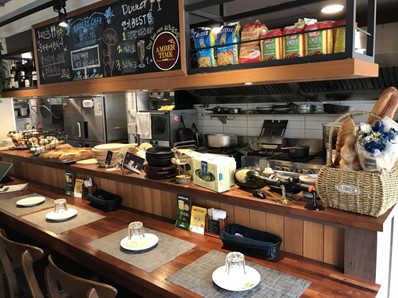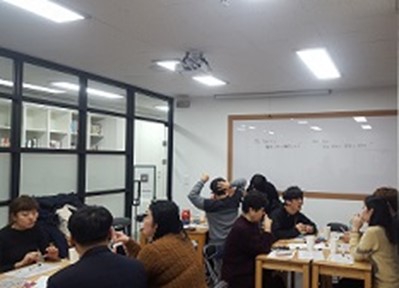Spaces in Seoul, South Korea Where People from Japan Live Their Lives
The 2002 Soccer World Cup which was co-hosted by South Korea and Japan and Winter Sonata, a Korean TV drama, which was broadcasted by NHK in 2003 have attracted Japanese people’s interest in South Korea. As a result, the number of people who study Korean at a language institution in South Korea, as well as those who visit South Korea, and who study Korean has increased. The number of Japanese people who live in South Korea*1 has been increasing since 2001 except 2015, when Middle East respiratory syndrome (MERS) became epidemic. I also studied in South Korea from fall 2013 to winter 2016. My experience of studying in South Korea has enabled me to have interest in people from Japan who live their lives in South Korea*2 and I have decided to conduct research on their living.
Currently, I am conducting research on “ethnic spaces” where people from Japan live their lives, especially “ethnic businesses.” Ethnic Business are businesses which are established through forming an ethnic community in one region by foreign people who consist of a specific ethnic group. For example, an ethnic community is formed in Dongbu Ichon Dong district, Seoul where many Japanese people live their lives.
To date research on emigration from Japan to South Korea mainly has focused on two points. One is the historical research regarding the residential conditions of Japanese people during the period of Japanese rule and movements of Japanese people who remained in South Korea after the war. The other is the current conflicts Japanese students and business persons who live in South Korea have. When it comes to anthropology, which is my research field, there are some research which clarifies the formation of an isolated Japanese community through the historical background between Japan and South Korea. However, it is impossible to explain the current people’s movement from Japan to South Korea only through such previous research. Lifting a ban on imports of Japanese culture which was banned by Korean government until the end of 20th century has enabled Korean people to close the gap which had developed between South Korea and Japan. Consequently, Japanese culture has become popular in South Korea and the number of shops which deal with Japanese culture has increased dramatically. Some of the shops have been run by people from Japan. It is in Hongdae, Sinchon, and Edae(Ewha Womans University) districts which are called towns for young people, not in Dongbu Ichon Dong district that such shops are located. What are reasons for this? Although the details of the reasons need to be examined from now on, it is considered that one of the aspects for this is that these districts have been already familiar with Japan and the number of people from Japan who go to Korean language schools affiliated with the universities in the districts have increased.
The current situation of Seoul has made me wonder if people from Japan and Korean people influence each other in the process of sharing ethnic spaces which focus on Japan and their identities thus can be changed in the process. It is in the ethnic spaces people from Japan form in Seoul that we can observe such things. Therefore, from November 2017 through February 2018, I conducted surveys on ethnic businesses people from Japan in Seoul have been conducting, especially, in Hongdae, Sinchon, and Edae districts.
Many of the businesses which are run in these districts are Japanese-style restaurants, such as izakaya (Japanese-style bars), ramen (Chinese noodle) shops, or tonkatsu (pork cutlet) restaurants. In particular, what impressed me most is a Japanese-style shop which provides both bread and Italian food. You might consider how the shop provides Japanese style Italian food. If you are in Japan, it might be difficult to notice that food from foreign countries is localized in Japan. That is, Japanese-style Italian food means Italian food which is localized in Japan and they provide such food at the Japanese-style Italian restaurant (see picture 1). Other than restaurants, there is a study abroad agency for Japanese people (see picture 2). They provide not only consultation services but also cultural exchanges between Japanese people and Korean people. In addition, they run a wide variety of businesses including real state offices for Japanese people and Japanese beauty shops (see picture 3 which was taken in Myeong-dong).
From now on, I will conduct surveys in Seoul again in the future. In my future research I would like to clarify (1) why ethnic businesses which focus on Japan have been developed in the towns for young people which are not ethnic communities; (2) how people from Japan take ownership of ethnic spaces; and (3) how people in South Korea perceive ethnic spaces in Seoul as places they seem to belong to.
IMASATO Hajime
*1 Source: Current Condition of Foreign People Who Are Registered in South Korea According to Regions They Live in and Sex, Issued by Statistics Korea
*2 In Seoul there are some Zainichi Koreans who live in South Korea. Therefore, I use the expression “people from Japan” which include Japanese people.














